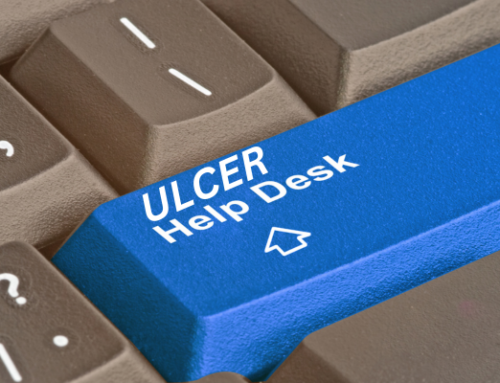Medical device-related pressure ulcers create localized injury to the skin or underlying tissue as a result of sustained pressure from a device.
“Medical device-related pressure ulcers (MDR PrUs) hospital acquired pressure ulcers (HAPUs) often mirror the shape and location of a medical device. A unique aspect of MDR PrUs is a rigid plastic material used to construct several medical devices as the source of the external pressure,” explains Joyce M. Black, Chronic Wound Care Management and Research (2016: 3 91-99).
Dr. Greg Vigna, wound care expert, national decubitus ulcer attorney states, “Unlike bedsores, the source of pressure is the device and not the bed. Unlike bedsores where the wounds occur at sites of pressure to soft tissues compressed between bones and the bed, medical device pressure ulcers are caused by the device.”
What interventions does Joyce Black recommend to prevent medical device-related pressure ulcers in her article, “Medical device-related pressure ulcers”? S
1) House-wide interdisciplinary PrU prevention team Dashboards/visibility boards displaying data.
2) Quarterly house-wide PrU prevalence study, focus on MDR PrU prevention
3) Use and auditing the electronic medical record for adherence to set group of preventive interventions used on all patients (often called a SKIN care bundle)
4) Skin surveillance rounds/daily huddles in all units; skin champions
5) Application of layered bordered foam dressings per protocol for cushioning beneath devices
6) Hourly intentional rounding (patient/family education) and daily staff safety huddles
Click the following link to learn more: https://www.tandfonline.com/doi/full/10.2147/CWCMR.S82370
Dr. Vigna adds, “I have seen medical device related pressure ulcers at trach sites, PEG tube sites, feet secondary to multi-podus boots, urinary catheters, rectal tubes, and cervical collars. Every medical device must be assessed on nursing rounds for undue pressure and the medical device must be discontinued when it is no longer needed.”
“Every medical device must be assessed on nursing rounds for undue pressure and the medical device must be discontinued when it is no longer needed.” — Greg Vigna, M.D., J.D.
Dr. Vigna continues, “We have filed a case in White County, Arkansas, against White County Medical Center, for serious injuries caused by a urinary catheter to the skin and soft tissues of our client that required surgical debridement of dead tissue and several weeks at home health (Case No. 73 CV-23-1085).”
Dr. Vigna concludes, “We agree with the Centers of Medicare & Medicaid Services which classify this type of outcome as a Never Event. Our position is that this injury-causing urinary catheter was never needed and it was not managed reasonably by nursing staff during our client’s short hospitalization. The result speaks for itself, dead tissue.”
Read this primer to learn about “Never Events” and, for resources and information, visit the Decubitus Ulcer Help Desk.
Greg Vigna, MD, JD, is a national malpractice attorney and an expert in wound care. He is available for legal consultation for families and patients who have suffered decubitus ulcers because of poor nursing care at hospitals, nursing homes, or assisted living facilities. The Vigna Law Group, along with Ben C. Martin, Esq., of the Martin Law Group, a Dallas, Texas national pharmaceutical injury law firm, jointly prosecute hospital and nursing home neglect cases that result in bedsores nationwide.
Greg Vigna, MD, JD
Vigna Law Group
+1 800-761-9206
email us here
Visit us on social media:
Facebook
Twitter
LinkedIn




